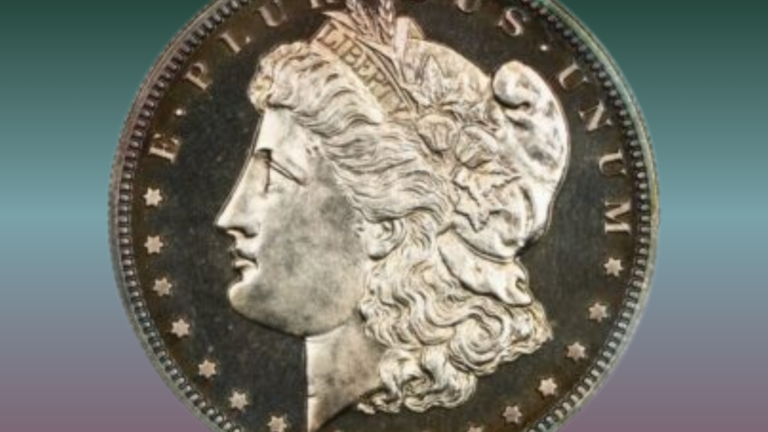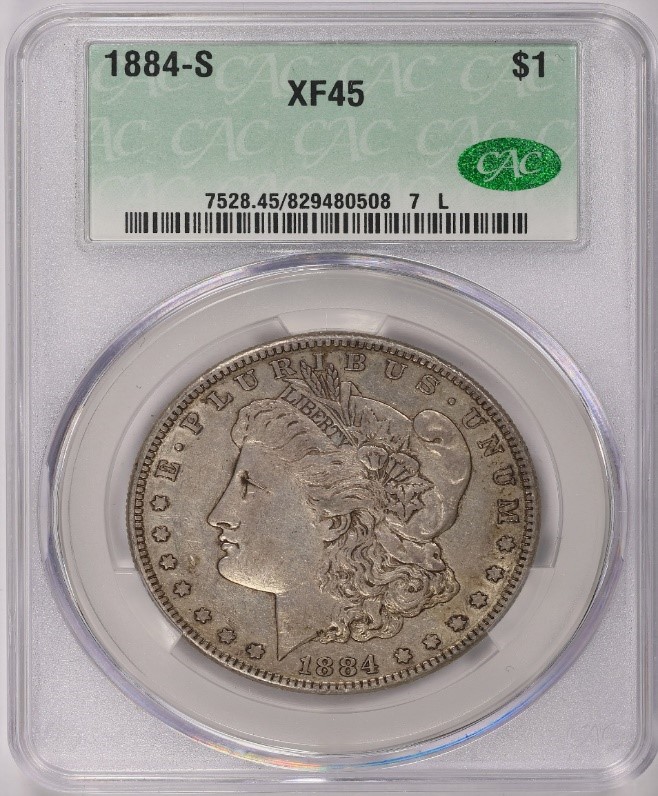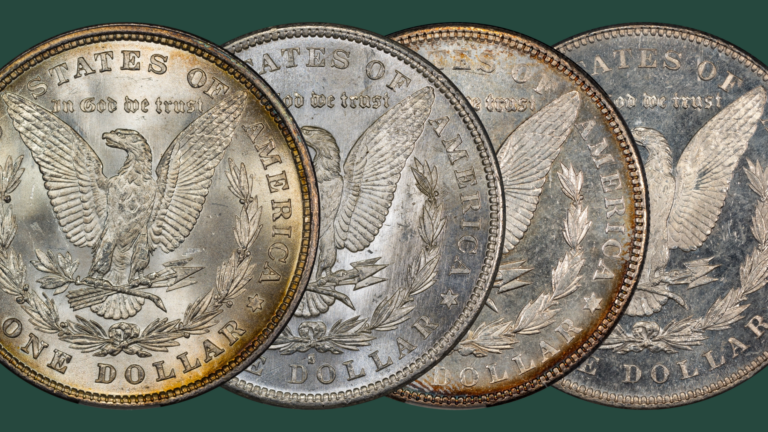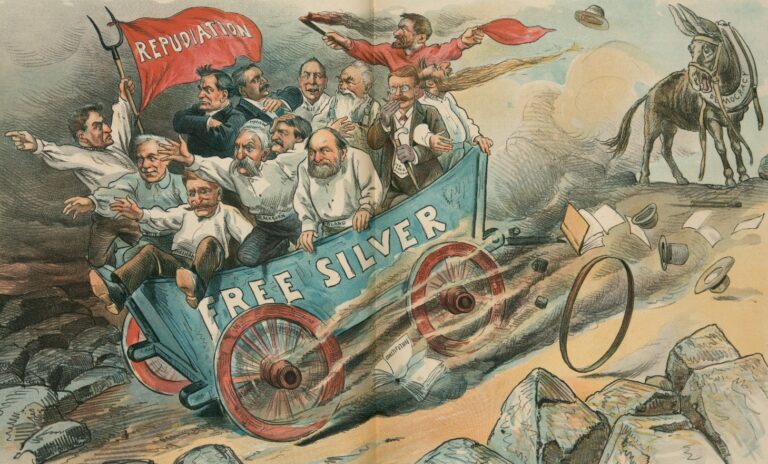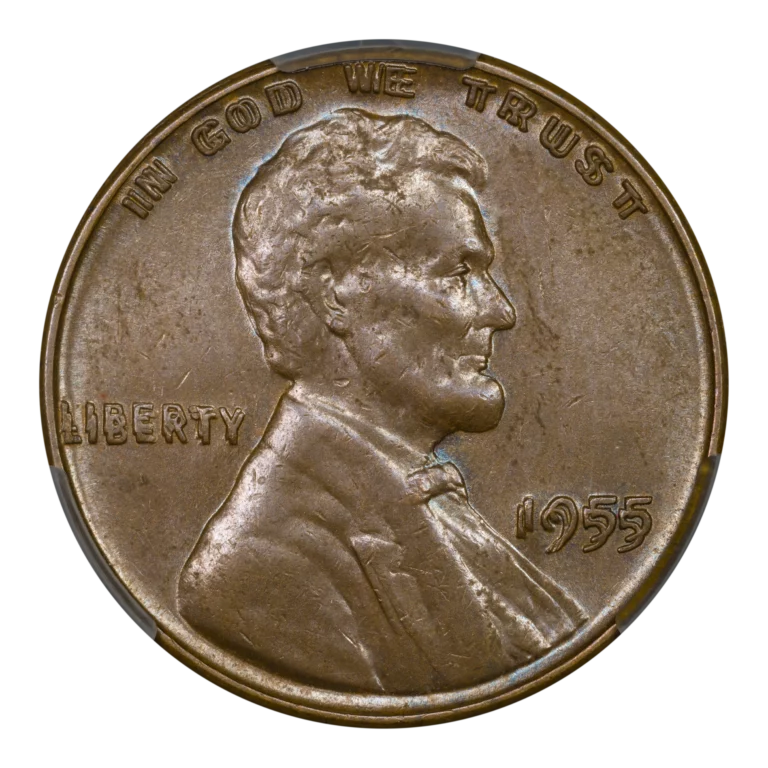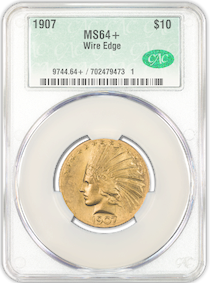by Greg Reynolds
This is a companion to a discussion about building a set of circulated, nineteenth century date Barber dimes in VF-20 to AU-55 grades. On average, nineteenth century dates are more valuable. As most of the common dates in the series fall into the twentieth century, and the key date 1895-O is in the nineteenth century, it makes sense for a beginner to start with the twentieth century dates and later focus on nineteenth century dates. Collectors tend to learn while collecting.
A complete set of business strike Barber dimes is a very realistic objective. There are no extremely rare business strikes in the series. Only two of the semi-keys are from the twentieth century, the 1901-S and the 1903-S.
The least scarce Barber dimes are often called “common dates.” Most of these date from the twentieth century. Here is a debatable list of “common date” Barber dimes: 1892, ’97, ’98, ’99, 1900, ’01, ’02, ’05, ’07, ’08, ’08-D, ’09, ’10, ’11, ’11-D, ’12, ’12-D, ’13, ’14, ’14-D, ’15, and ’16. Coins of these dates in circulated (sub-60) grades are often not certified, as the costs of certification would amount to a substantial percentage of the value of each coin.
Regarding CAC stickered and CACG graded representatives of the common dates, fair medium-retail retail prices on average in 2025 and 2026 could very well be $18 in VF-20, $42 in XF-40 and $95 in AU-50 grade, though it might not be easy to find and soon acquire many dates for prices around these amounts. On Aug. 4, 2024, DLRC sold a CACG graded XF-40 1901 for $50. On Feb. 9, 2025, GreatCollections sold a CAC graded AU-55 1908 dime for $95.70. Other CAC approved common date Barber dimes are around, and can be found at a substantial number of coin shows.
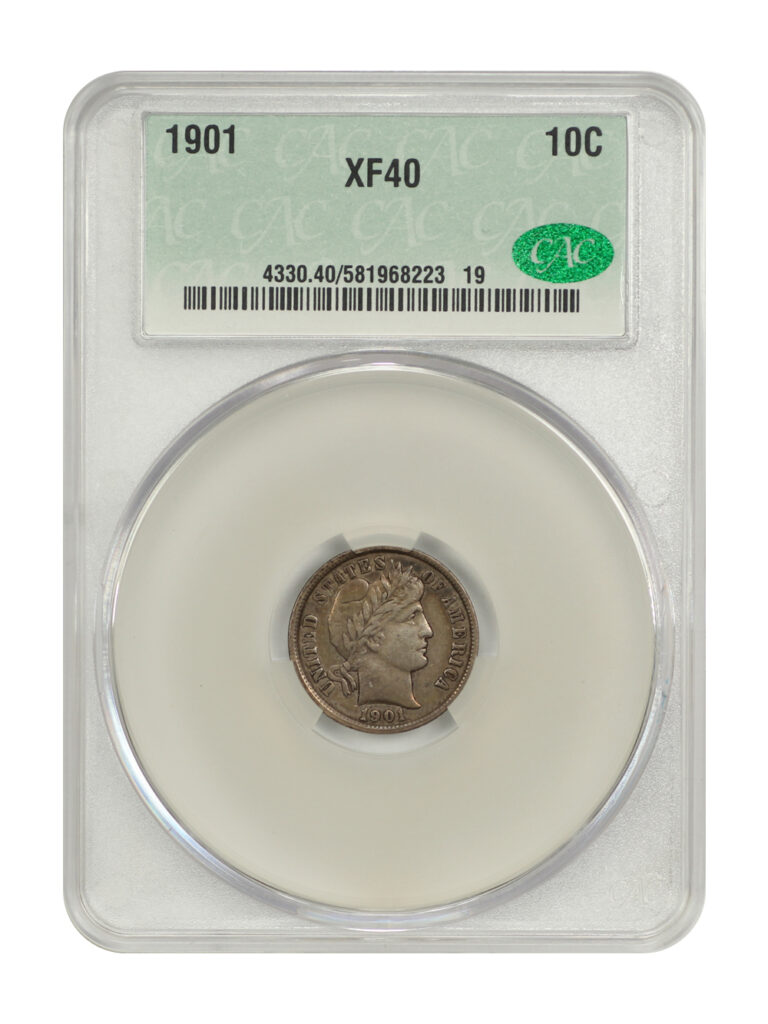
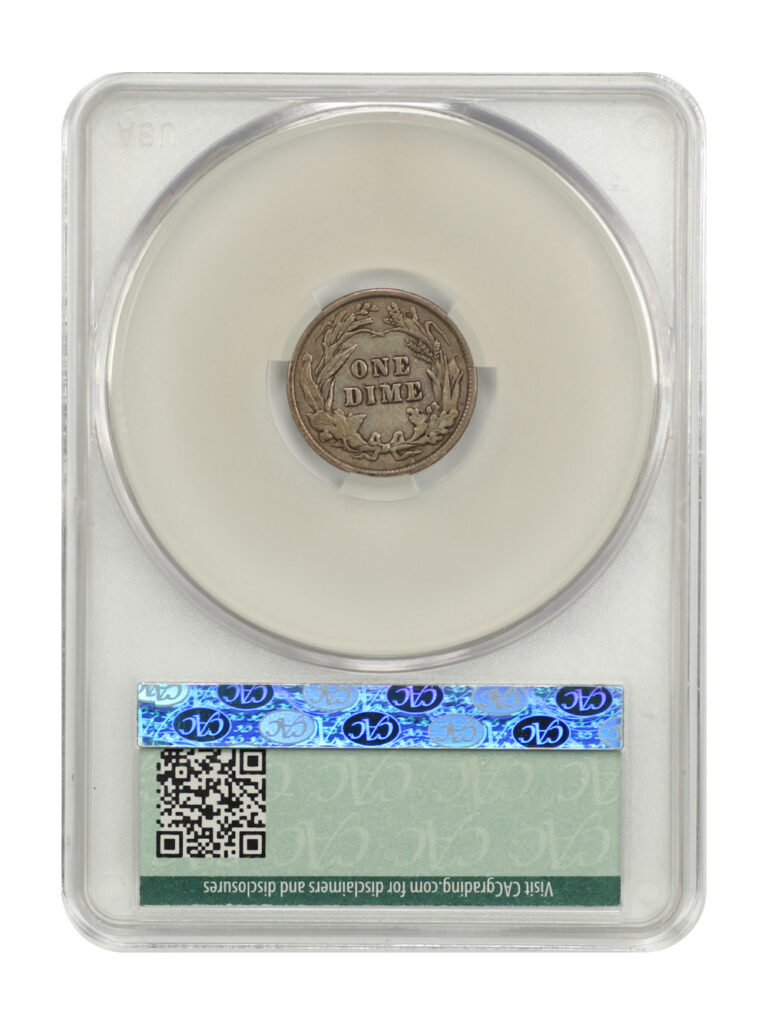
Four Mints Producing Dimes in One Year
A collector who has yet to learn much about Barber dimes may wish to assemble a four-coin ‘year set,’ sometimes illogically called a ‘date set,’ for one year from 1906 to 1909. During each of these years, dimes were produced at the Philadelphia, Denver, New Orleans and San Francisco Mints.
The Denver Mint has produced dimes from 1906 to the present, and these are usually identified with a ‘D’ mintmark. Denver Mint dimes dated from 1965 to 1967 do not have mintmarks.
Dimes were first minted in New Orleans in 1838 and last minted there in 1909, though not in every year in between. Indeed, there were many years from 1838 to 1909 during which the New Orleans Mint did not produce dimes, including a span from 1861 to 1890. Barber dimes were struck at the New Orleans (‘O’) Mint every year from 1892 to 1909, except in 1904.
Why were there no 1904-O dimes? Each of the “years in which coins were not struck was due to supply and demand,” notes leading historian R. W. ‘Bob’ Julian. “If no demand for a certain denomination from the area served by New Orleans, then there was no coinage.” In response to an inquiry of mine, Julian figures that 1903-O “dimes were still on hand for distribution and demand was perhaps light in 1904. Generally speaking it would have been banks who ordered dimes but large businesses” were factors, too.
Barber dimes were minted at the San Francisco Mint with an ‘S’ mintmark every year from 1892 to 1916, though all 1894-S dimes were Proofs or nearly so, clearly special strikings that were not part of a regular press run.
Barber dimes were also minted at the Philadelphia Mint, without a mintmark, every year from 1892 to 1916. Before 1942, Philadelphia Mint coins did not have mintmarks, and did not have them in general until 1980.
From all four mints, Barber dimes minted in 1907 and 1908 are not very scarce. A VF to XF grade 1907 would cost just a modest amount and an AU-58 grade 1907 is not particularly expensive. On July 10, 2022, GreatCollections sold a CAC approved AU-58 grade 1907 for $198. In Nov. 2018, GreatCollections sold a CAC approved, NGC graded AU-55 1907-D, which was earlier in the Eric Newman Collection, for $102.40.
Back on July 31, 2012, Heritage sold a CAC approved VF-30 grade 1907-O for $54. That same coin could very well bring more than $54 if offered by Heritage in 2025 or 2026. The 1907-O is a slightly better date.
As for the 1907-S, I suggest buying a few apparently appealing coins and sending them to CACG in Virginia Beach. These are worth considerably more than equivalent 1907-D dimes, yet the total CAC population of 1907-S dimes is just twenty-five in all grades. Though not rare in absolute terms, 1907-S dimes are CAC rarities.
The 1908-S is less scarce than the 1907-S. It is, though, a CAC rarity as well, with a population of just thirty-five in all grades. On March 3, 2019, GreatCollections sold a CAC approved AU-55 grade 1908-S for $220. A CAC approved XF-40 or -45 grade 1908-S would probably retail for less than $100.
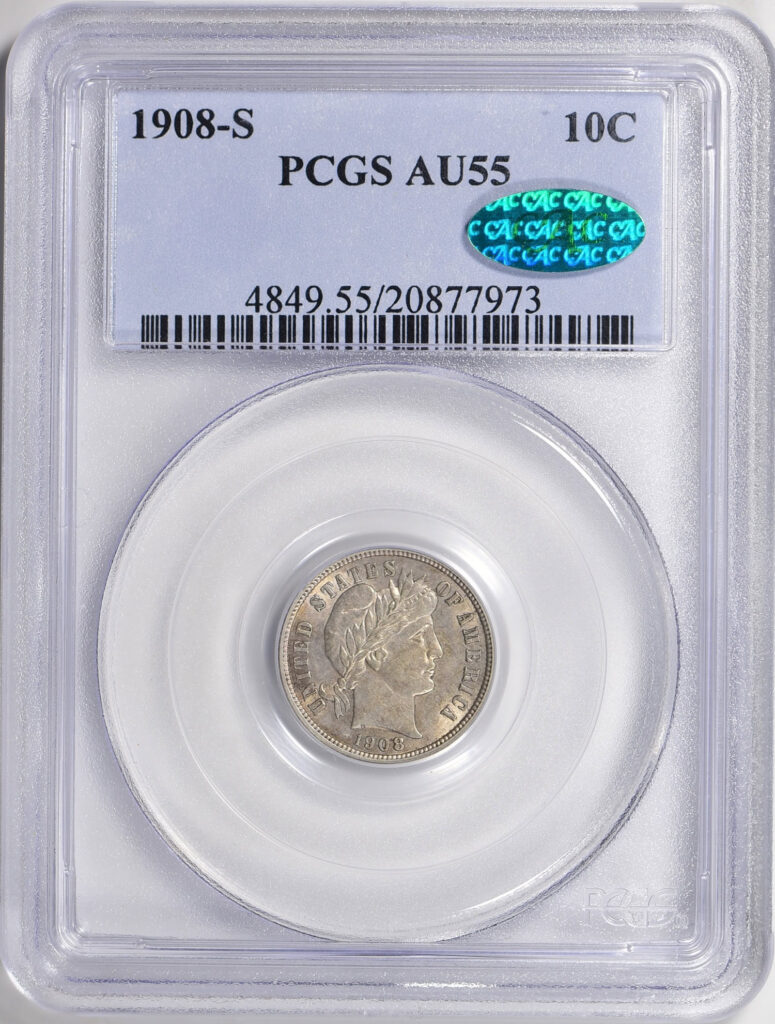
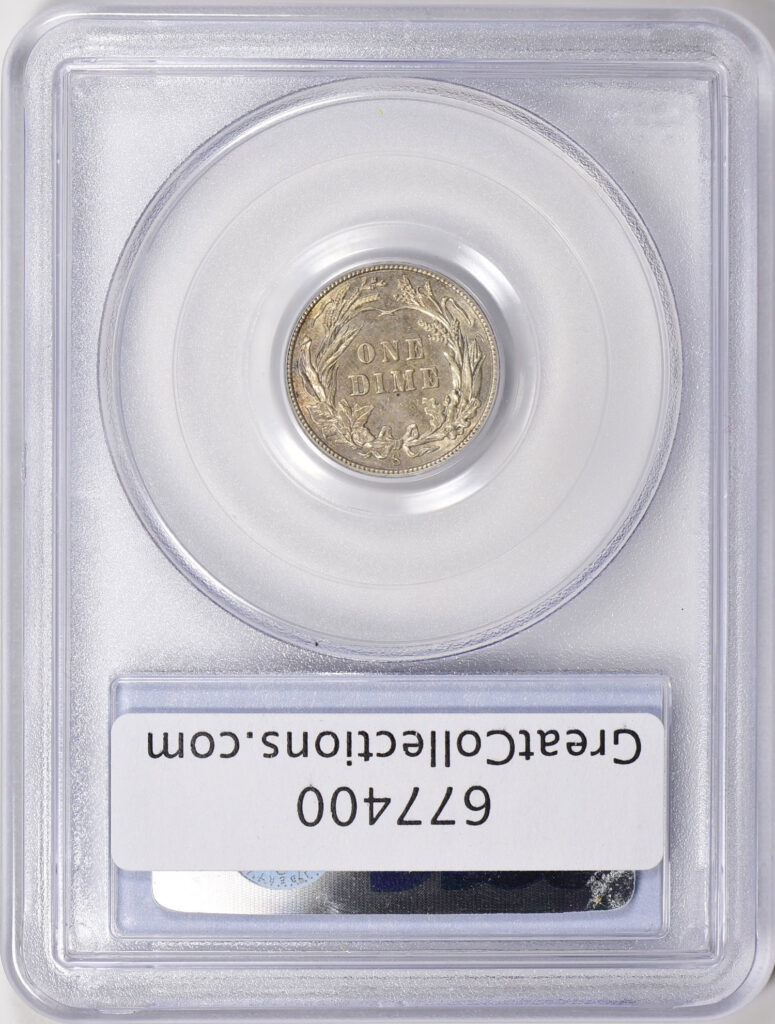
During 2022, GreatCollections sold two CAC approved XF-40 grade 1908-O dimes, for $125.50 on Oct. 30 and for $104.50 on Nov. 13. On Feb. 18, 2024, GreatCollections sold a CAC approved XF-45 grade 1908-O for $138.60. The assembling of a 1907 or 1908 year set with coins from four different mints would be an interesting and sensible introduction to the series of Barber dimes.
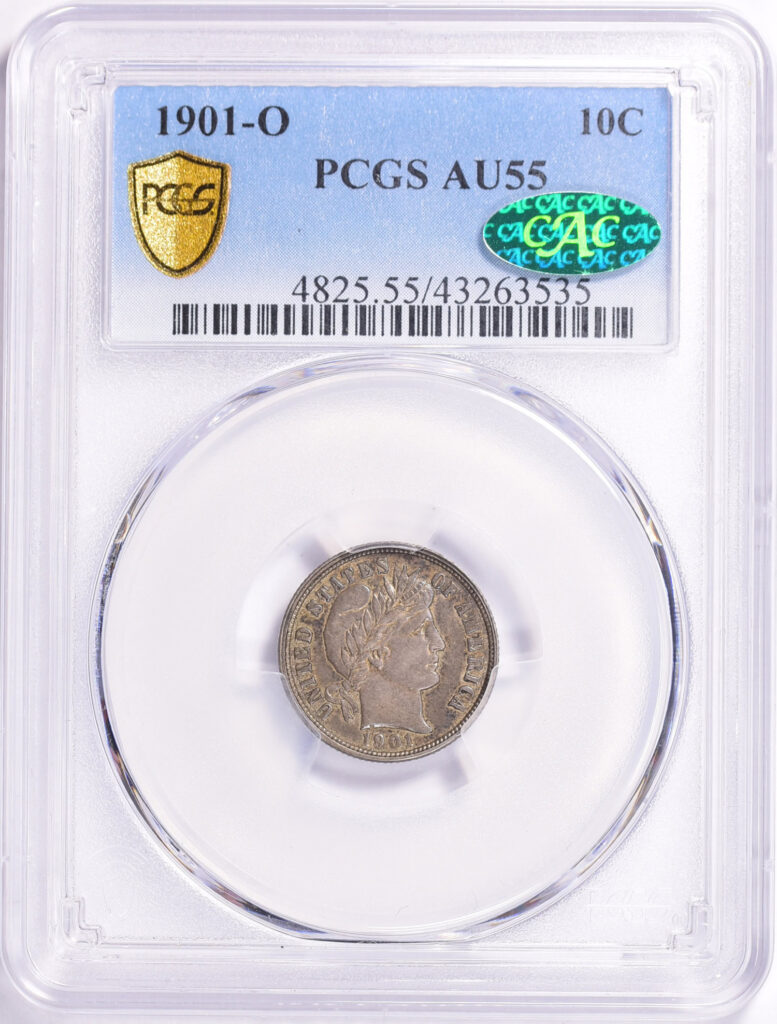
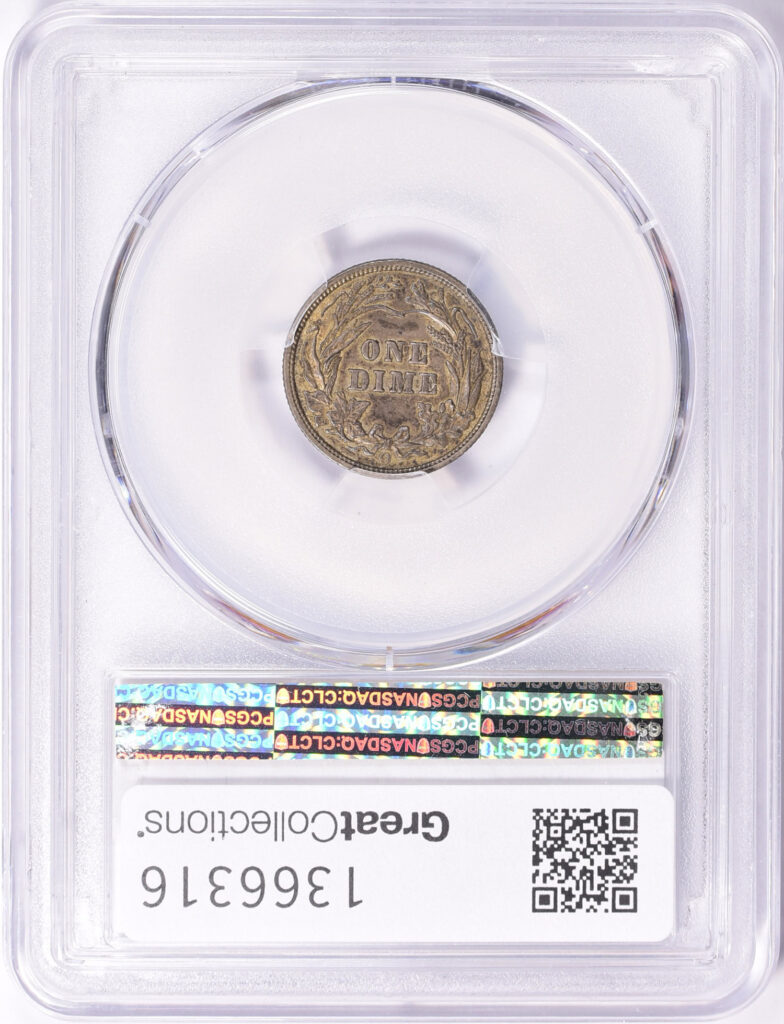
‘Better Dates‘
Coins that are scarcer than the common dates though not as scarce as the semi-keys are ‘better dates.’ Some are much ‘better’ than others; indeed, some dates are very elusive in the VF-20 to AU-55 grade range.
The 1900-O is a ‘better date.’ On July 30, 2023, GreatCollections sold a CAC approved XF-45 grade 1900-O for $232.76. This would be a high-wholesale price in the middle of 2025. A medium retail price for this 1900-O would be close to $300.
On May 14, 2023, GreatCollections sold a CAC approved, PCGS graded AU-55 1901-O for $309.10. On Oct. 16, 2022, GreatCollections sold a CAC approved, NGC graded AU-50 (fifty) 1901-O for $852.50. Why would that coin have realized $852.50? The current CPG-CAC medium retail estimate for an AU-50 grade 1901-O dime is $210, and the estimate in October 2022 could not have been much different from $210. Anyone who has carefully examined this 1901-O dime is invited to contact me. One possibility is that this 1901-O could have been an example of a scarce overmintmark variety, an ‘O’ over a horizontal ‘O’? If a mint employee accidentally punched a mintmark sideways in a die, then he or someone else would have adjusted for his mistake by repunching the mintmark in the same die.
Some collectors pay large premiums for mintmark varieties. In most cases, however, the repunching is barely noticeable with magnification Furthermore, there are known repunched mintmarks for many dates in the series of Barber dimes. It is not practical to discuss them here. I suggest that each collector complete a set ‘by date’ before deciding whether searches for varieties are worthwhile to the respective collector. While most collectors of Barber dimes ignore varieties, some collectors are very enthusiastic about them.
Semi-Key: 1901-S
The 1901-S is definitely a semi-key, though it is nowhere near as scarce as the 1901-S quarter. I have seen a substantial number of 1901-S dimes with PCGS grades in the Fine-12 to AU-55 range. I really believe that more than a few of them have never been submitted to CAC, or failed at CAC because experts at CAC thought that they were slightly overgraded. A significant number of PCGS or NGC graded, circulated 1901-S dimes around would qualify for numerical grades if submitted to CACG in Virginia Beach.
Of course, there are many submitted coins that are not certified to the satisfaction of the submitters. Even so, it would be educational to acquire some circulated 1901-S dimes and submit them to CAC.
The current CAC pop of circulated 1901-S dimes is very low, just thirty in the Fine-15 to AU-55 grade range, even though there is an obvious financial motive for dealers to get circulated 1901-S dimes certified. In other words, the 1901-S is far from being a case where the certification fee would amount to a large percentage of the value of the respective coin. The CPG-CAC medium retail estimate for a Fine-12 grade 1901-S dime is $500, and the corresponding estimate for a VF-20 grade 1901-S is $600.
On Aug. 16, 2020, GreatCollections sold a CAC approved XF-45 grade 1901-S dime for $1017.50. On July 9, 2023, GreatCollections sold a CAC approved AU-53 grade 1901-S for $995.50.
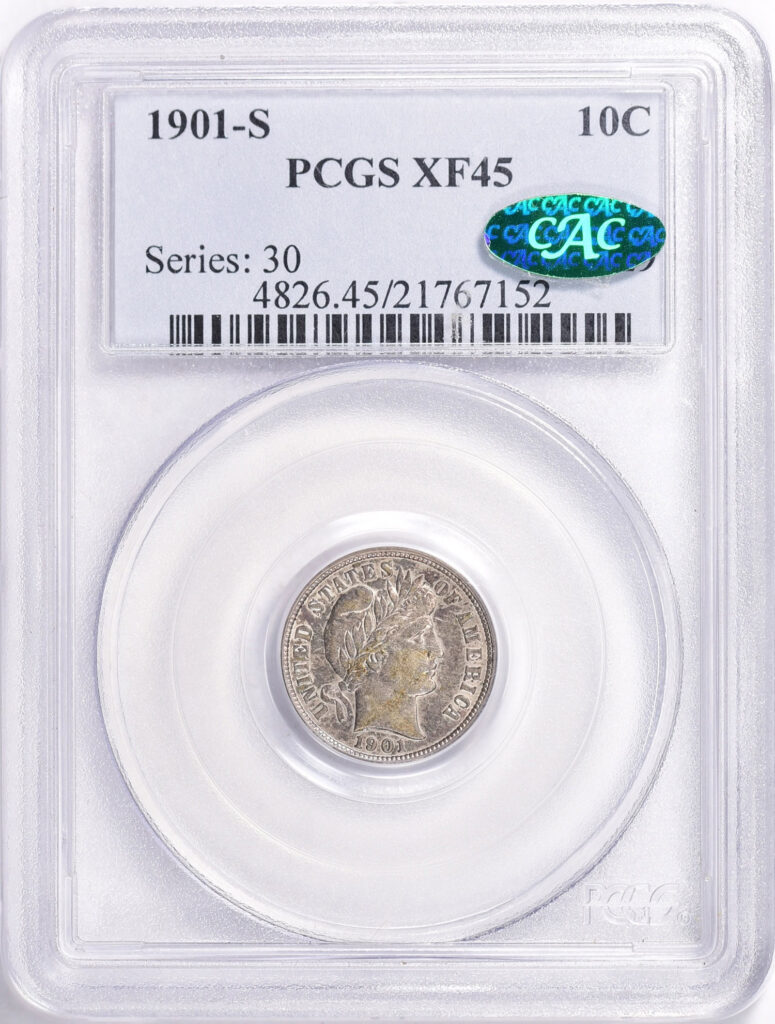
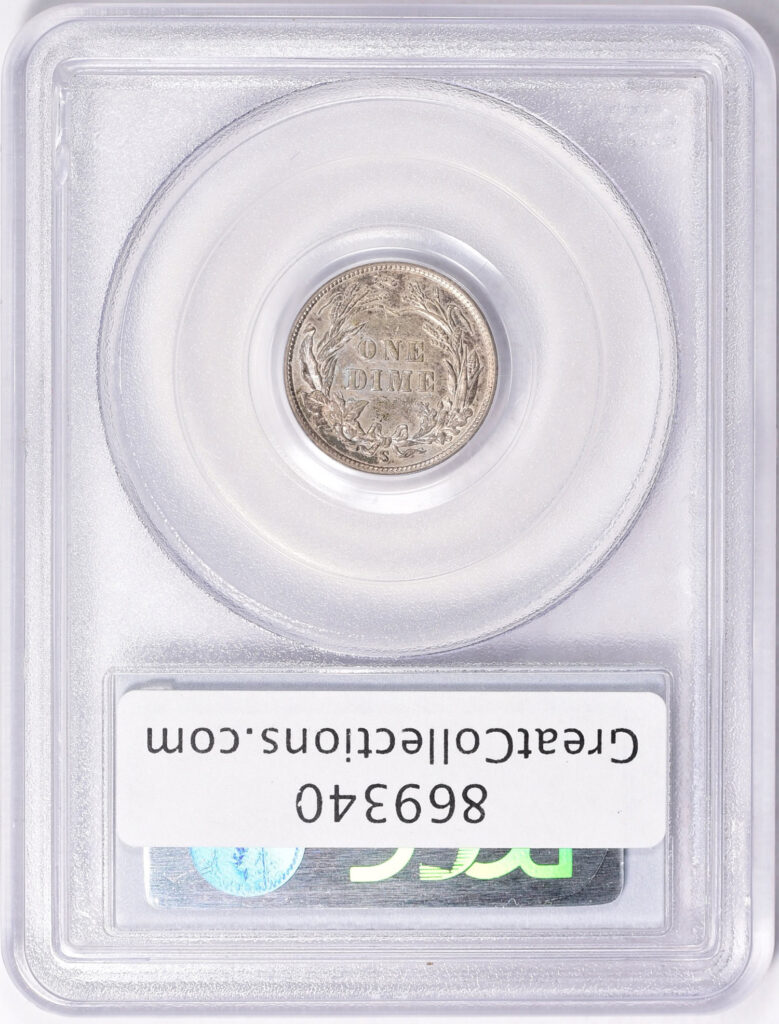
While it is financially worthwhile for dealers to submit Fine-12 or higher grade 1901-S dimes for certification, the 1902-S is a different matter. The CAC pop of circulated 1902-S dimes is very low, just twenty-eight, partly because many dealers will not find it worthwhile to send Fine to VF grade 1902-S dimes to CAC or to any grading service.
If a dealer spends $50 on a raw Very Fine grade 1902-S dime, with the idea of wholesaling it for $65 or retailing it for $90, he is unlikely to be willing to spend $20 plus shipping costs to have it certified. A collector, however, may justify a $20 fee as a contribution to his or her education about coins. Besides, many collectors enjoy interpreting raw coins and then submitting them for grading.

Super Semi-Key: 1903-S
The 1903-S dime is a semi-key and is the scarcest twentieth century date in the series. It does, though, maintain a low profile. Collectors are more likely to talk about nineteenth century semi-keys like the 1896-S, the 1894-O or even the 1895. Fortunately for collectors seeking one, CAC approved 1903-S dimes appear often enough. A collector may practically wait for a 1903-S that he or she especially likes.
On March 6, 2022, GreatCollections sold a CAC approved VG-08 grade 1903-S dime for $150.82. In June 2022, DLRC sold a CAC approved Fine-12 grade 1903-S for $480. On Sept. 3, 2024, Heritage sold a CAC approved, NGC graded VF-25 1903-S for $432. On April 7, 2024, DLRC sold a CACG graded AU-50 1903-S dime for $900.
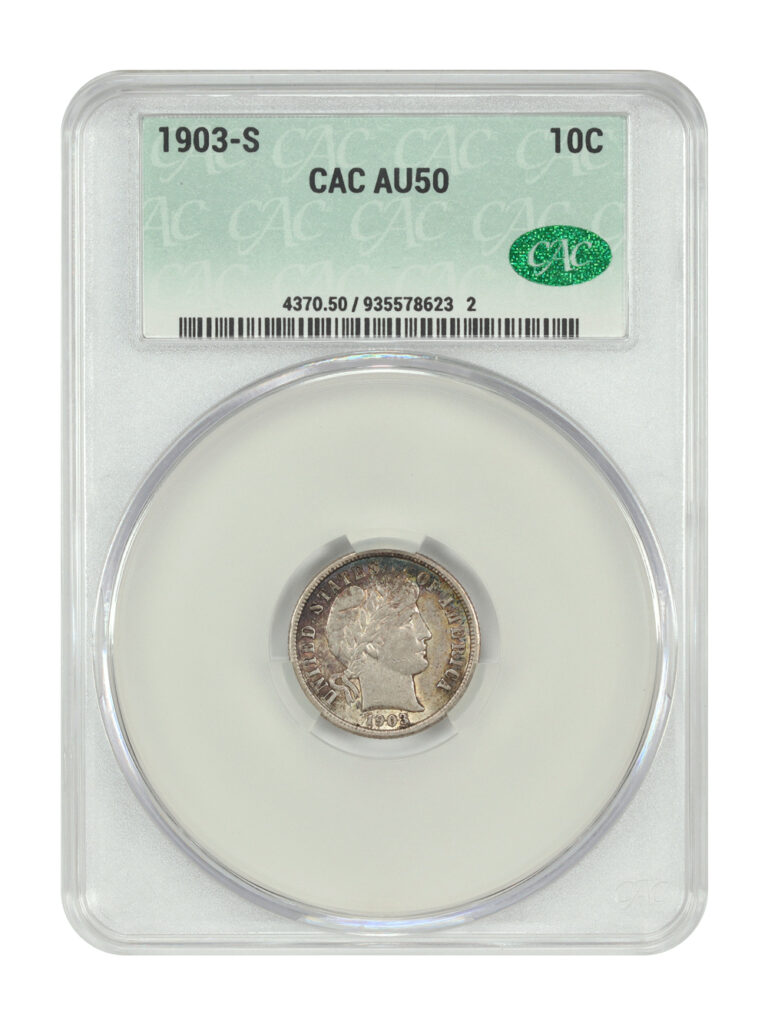
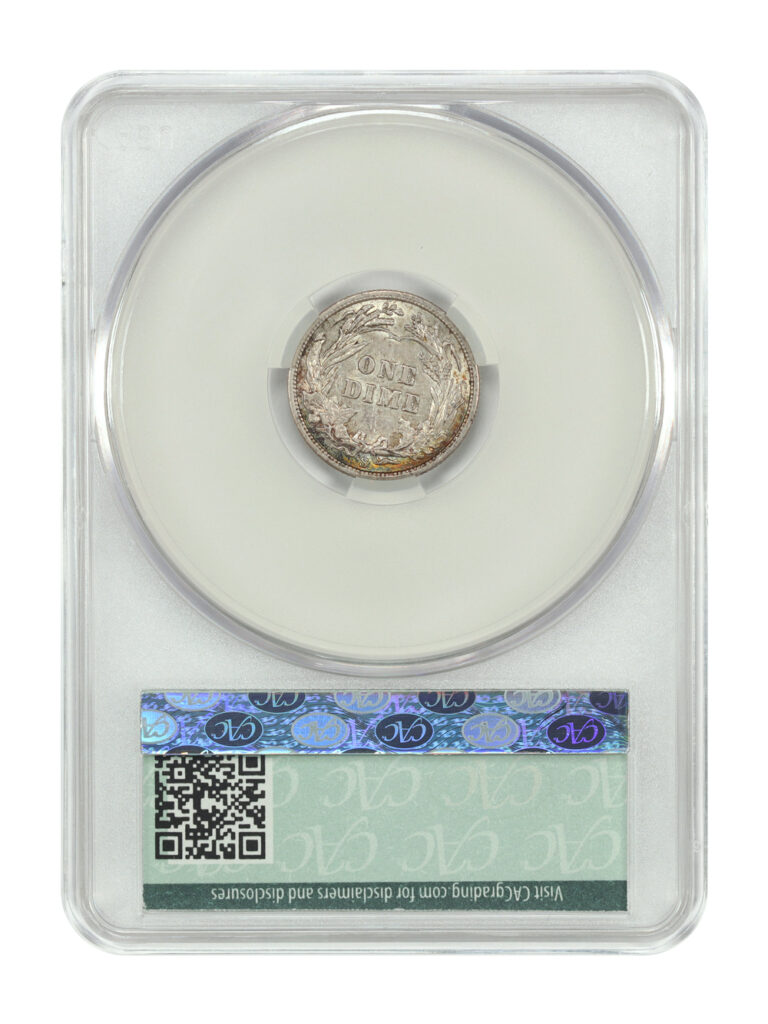
The 1904 Philadelphia Mint issue is common. The 1904-S is a much better date, though it is not nearly as important as the 1904-S Barber half dollar. On July 25, 2021, GreatCollections sold a CAC approved VF-25 grade 1904-S for $237.63. If offered in 2025 or 2026, a medium retail value for this coin would probably be above $250.
The 1905-‘Micro O’
Although the 1905-O is only a slightly better date, the 1905 with a relatively small ‘O’ mintmark is a famous variety. The mintmarks for Barber quarters were smaller than those for Barber dimes because there was not much field space available in the reverse design of Barber quarters. The general belief is that an ‘O’ mintmark punch that was intended for a quarter reverse die was accidentally used on at least one dime reverse die.
Is a 1905-‘Micro O’ dime needed for a set? This is a matter of opinion. The difference in size is noticeable, yet this is a reverse characteristic that does not capture the attention of most people who see 1905-O dimes.
Beginning collectors assembling sets of circulated Barber dimes might as well include a 1905-‘Micro O’ if a CAC approved coin is available for a reasonable price. In grades below AU-55, the 1905-‘Micro O’ is less expensive than the 1903-S, a semi-key, but is far more expensive than common dates and much more expensive than a 1905-O with a regular size mintmark. Relatively original, pleasing 1905-‘Micro O’ dimes are sometimes very hard to find.
Back on Dec. 24, 2017, GreatCollections sold a CAC approved VF-20 grade 1905-‘Micro O’ dime for $189.20. If GreatCollections offered this same coin in 2025 or 2026, it would probably bring a substantially higher price. In 2023, GreatCollections twice sold the same CAC approved VF-35 grade 1905-‘Micro O’ dime, for $458.70 on June 4 and for $533.50 on Dec. 17, 2023.
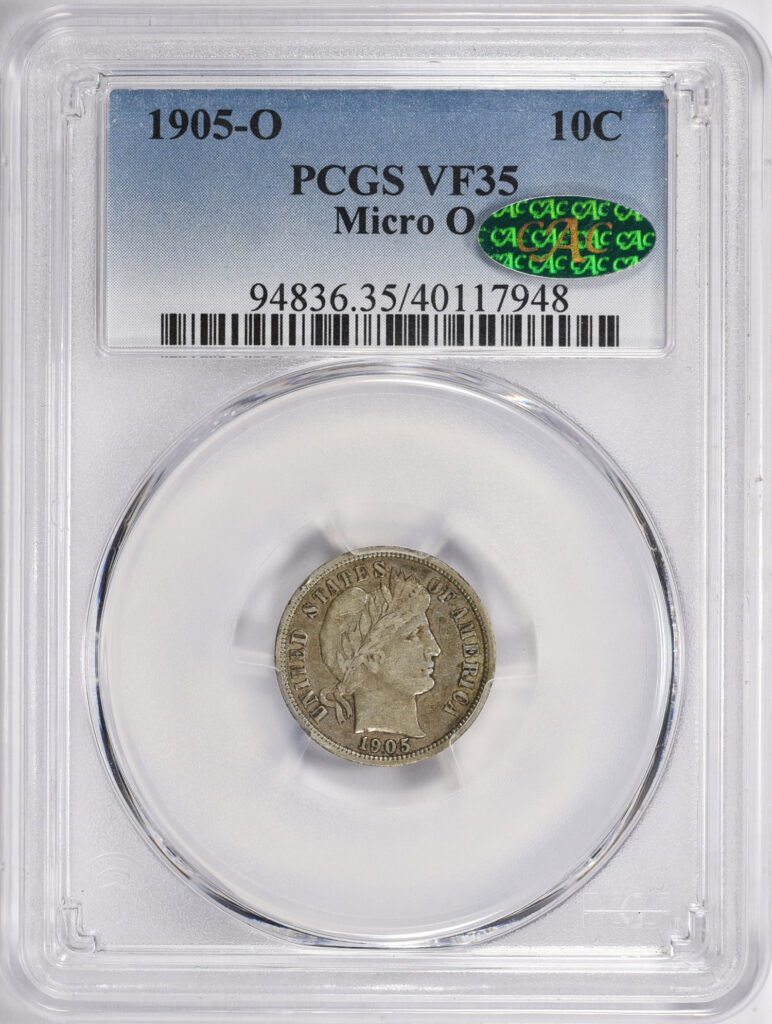
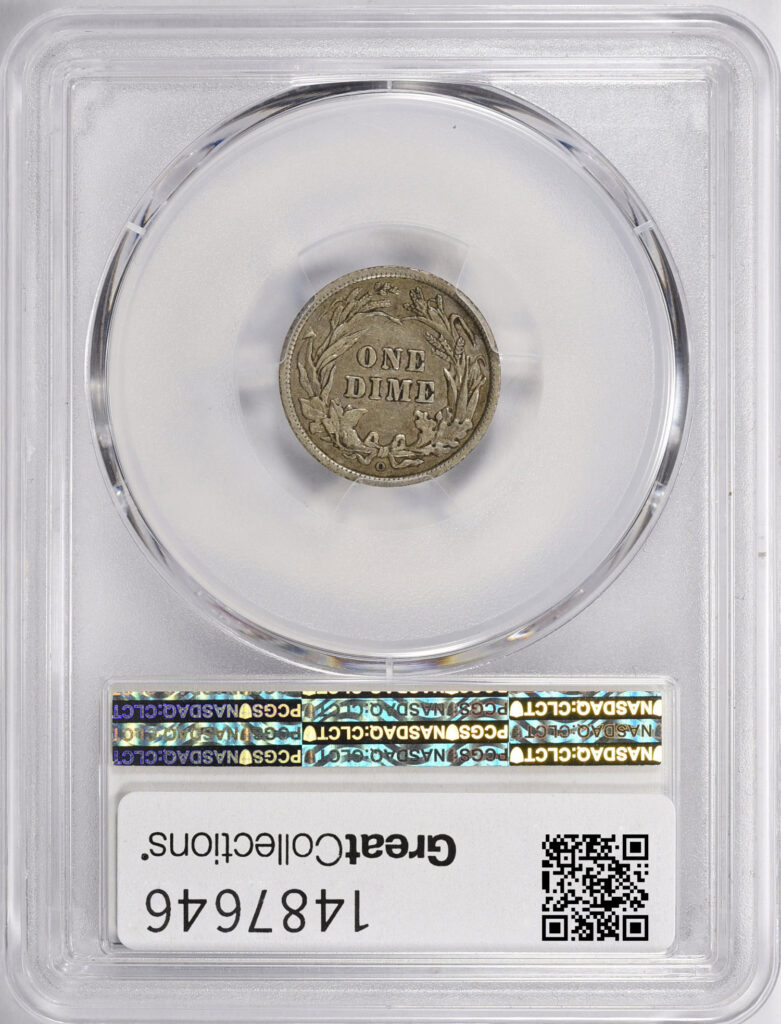
In the series of Barber dimes, most dates from 1906 to 1916 are not scarce. The 1909-S and the 1913-S are exceptions. The 1909-S is often not recognized as being particularly scarce, and 1909-S dimes sometimes fall way ‘under the radar.’
Despite the fact that a CAC approved 1909-S dime is worth more than $100 in Fine-12 grade and well over $200 each in XF grades, the CAC pop is only thirty, as of April 21, 2025. On Oct. 30, 2022, DLRC sold a CAC approved VF-20 grade 1909-S for $160. On May 8, 2023, GreatCollections sold a CAC approved AU-53 grade 1909-S for $506.
While the 1913-S is an important dime, it is overshadowed by the 1913-S quarter, which is one of the three key date Barber quarters. Since 2017, GreatCollections has sold a substantial number of circulated 1913-S dimes. A CAC approved VG-10 grade 1913-S dime realized $54.87 on Dec. 16. 2018. A CAC approved VF-20 grade 1913-S brought $255.30 on May 19, 2024. A CAC approved XF-40 grade 1913-S dime realized $441.10 on Oct. 13, 2024. A CAC approved AU-55 grade 1913-S realized $909.69. For less than half this price, the just mentioned CAC approved XF-40 grade 1913-S was probably a better value for most budget-minded collectors.

A Personal Perspective on the 1914-D
Although one of the most common dates in the series, the 1914-D dime is important to me. My grandmother had a significant number of them, perhaps more than a dozen. As a young woman, possibly beginning as a teenager, she had worked for years as a cashier in a cafeteria. People often spent coins that they had lying around their residences, often in drawers or on shelves in closets. My grandmother would substitute coins that were then relatively new for old coins that customers spent.
Before 1965, all genuine U.S. dimes in circulation were 90% silver or close to 90% silver. It was easy for her to switch a later date silver dime in situations where someone spent a 1914-D or earlier dated dime. She accumulated Barber dimes with a range of dates. It was probably just by chance that my grandmother had numerous 1914-D dimes, as she lived on the East Coast.
Beginning when I was five years old, she often gave me old coins, not just Barber dimes. By the time I was six, I was beginning sets in coin collecting folders. I was aware that the 1914-D was a very important Lincoln cent. I did not own one until I received a 1914-D cent for my tenth birthday. I was intrigued that my grandmother had so many 1914-D dimes. I kept at least one of her 1914-D dimes for more than thirty years.
In theory, a collector now could purchase a CAC approved VF-20 or -25 grade 1914-D for $15 to $20. In reality, few dealers will pay a grading fee to have certified a coin that might only retail for $20 and wholesale for less than that amount. If I still had my 1914-D dimes that came from my grandmother, I would send them to CACG in Virginia Beach. Classic U.S. coins with family connections should be fairly graded and stored in proper holders for posterity.
True collectors care about the items that they collect. Collectors of circulated Barber dimes should enjoy the process of seeking coins and not obsess about the challenges. It is easy to get started. In the context of classic U.S. silver coins, a complete set of circulated Barber dimes is very inexpensive and fun to build.
Images are shown courtesy of GreatCollections and DLRC.
Copyright © 2025 Greg Reynolds
About the Author
Greg is a professional numismatist and researcher, having written more than 775 articles published in ten different publications relating to coins, patterns, and medals. He has won awards for analyses, interpretation of rarity, historical research, and critiques. In 2002 and again in 2023, Reynolds was the sole winner of the Numismatic Literary Guild (NLG) award for “Best All-Around Portfolio”.
Greg has carefully examined thousands of truly rare and conditionally rare classic U.S. coins, including a majority of the most famous rarities. He is also an expert in British coins. He is available for private consultations.
Email: Insightful10@gmail.com

